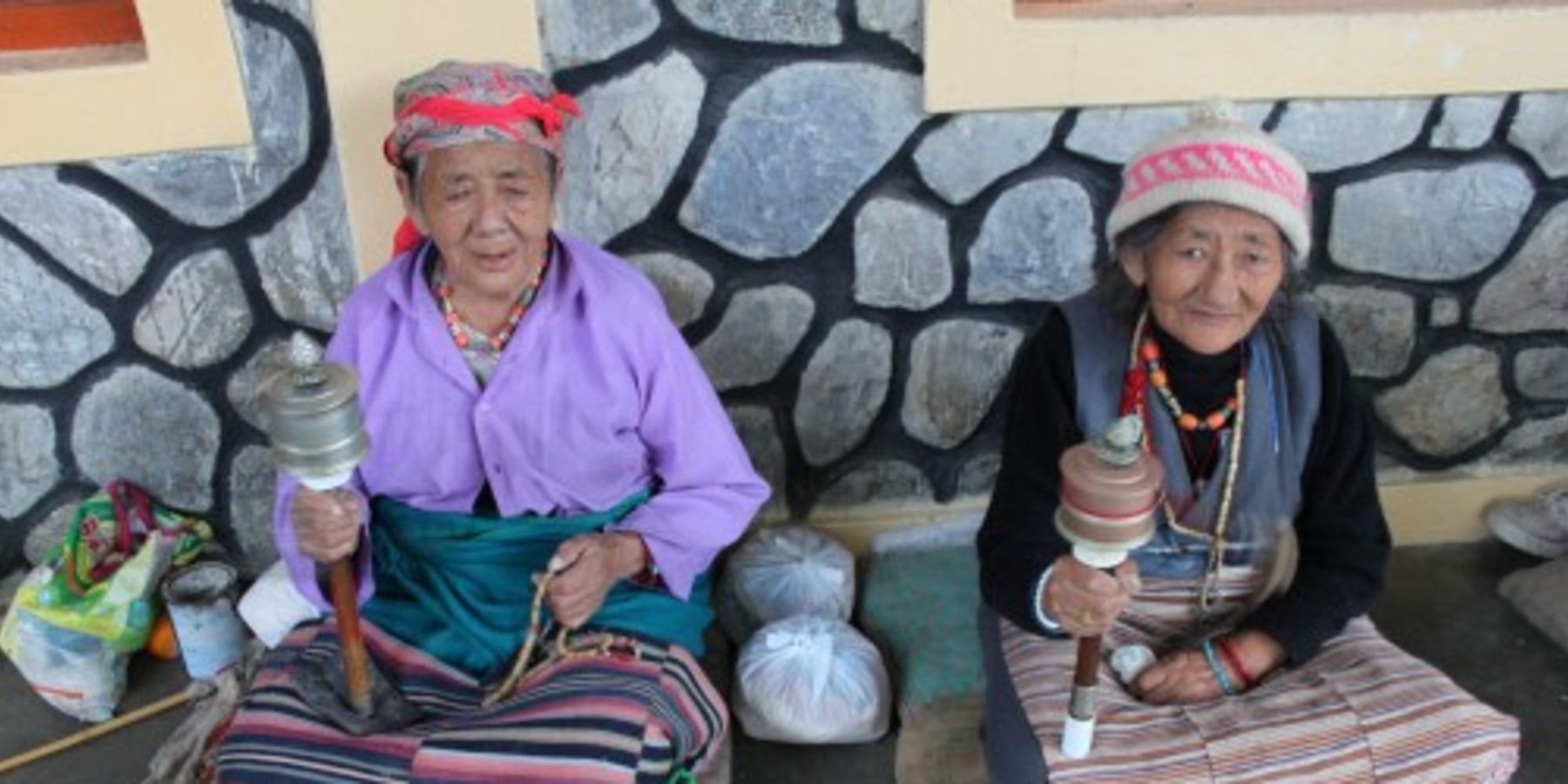
In may 1960, Nepal requested assistance from the international committe of the Red Cross (ICRC) and other aid organizations. The ICRC established emergency relief programs for the refugees. These programs were funded mostly by the United States Agency for International Development. In response to the refugees' plight, the Tibetan government established the Kathmandu Tibetan Welfare Office, a branch of the Tibetan Ministry of Home Affairs. The Tibetan Welfare Office functioned as a liaison between the refugees, various aid organizations, and the Nepalese government. Also known as the office of Tibet, it continues to serve this vital role today.
Estimates of the total number of Tibetan refugees currently living in Nepal differ. Approximately 20,000 were believed to have arrived in 1959 during the initial conflict. Many more arrived in the ensuing years, however these numbers were reduced as Tibetans emigrated to other countries. According to the demographic survey of Tibetan Exile conducted by Central Tibetan Administration, Dharamsala in 2009, the population of Tibetan refugees in Nepal stands as 13,500.
In the early 1960s, the Nepalese government established four “temporary” settlements for the Tibetan refugees, including Tashi Palkhel, located on the outskirts of Pokhara. The Nepal Red Cross (NRC), purchased the land for these settlements with funds donated by UNHCR. Today there are up to a dozen Tibetan refugee settlements scattered across Nepal, four of which are located in or near Pokhara: Jampaling, Paljorling, Tashi-Palkhel, and Tashiling. These camps have evolved into well built settlements, each with a gompa(Buddhist monastery), chorten(stupa), school, clinic and its particular architecture and Tibetans have become a visible minority in the city.
Jampaling was opened in 1975 and is one of the two main settlements established for the rehabilitation of Tibetans from the Mustang guerrilla force. The community, which is located an hour east of Pokhara on the road to Kathmandu, has a small plot of agricultural land on which they grow maize, rice and vegetables. Their main source of income is derived from spinning wool, which is done in the traditional way, by hand. It also has a school and a dispensary. The current population is about 750.
Paljorling, opened in 1972, also established for the rehabilitation of Tibetans from the Mustang guerrilla force, although today the residents come from other areas as well. Situated in the heart of Pokhara, it is the smallest (in terms of land area) of the four settlements. The community maintains a small carpet factory and a noodle factory. It is estimated that between 600-700 Tibetans live in Paljorling.
Tashiling, located on the south side of Pokhara, began life a temporary camp set up by the UNHCR (United Nation High Commission for Refugees) for refugees who gradually found their way to Pokhara from the border areas of Tibet. At its zenith in 1964, 1000 residents lived at this camp but number continue to decrease as many emigrate to India, Europe, Canada and the United States. Currently, 523 Tibetans are said to reside at Tashiling. The settlement has a co-operative engaged in the souvenir business and a carpet factory provides employment and income for residents. In addition to schools, the community has one modern dispensary, a branch of the Tibetan traditional medical center, and a small monastery which welcomes visitors to attend pujas held at 5:30 each morning.
Tashi Palkhel was established in 1962. It is located in the northern suburbs of Pokhara. The main source of income for residents of this settlement, which at present number 976, is derived from spinning wool, carpet manufacturing, and the sale of souvenirs. The community has schools, a modern dispensary, a branch of the Tibetan traditional medical center, and a large monastery that welcomes visitors during a puja, held every afternoon at 3:30.
Estimates of the total number of Tibetan refugees currently living in Nepal differ. Approximately 20,000 were believed to have arrived in 1959 during the initial conflict. Many more arrived in the ensuing years, however these numbers were reduced as Tibetans emigrated to other countries. According to the demograhic survery of Tibetan Exile conducted by Central Tibetan Administration, Dharamsala in 2009, the population of Tibetan refugees in Nepal stands as 13,500.

